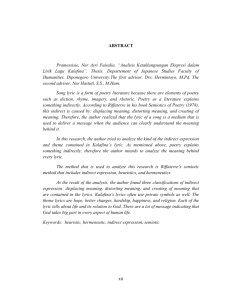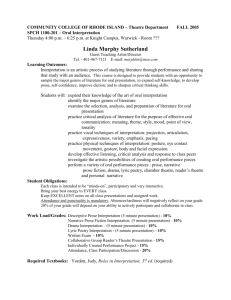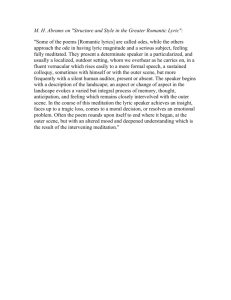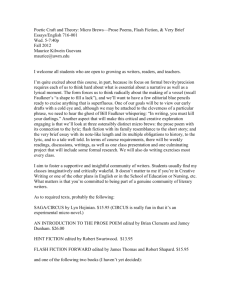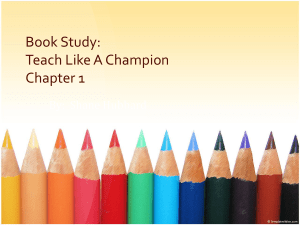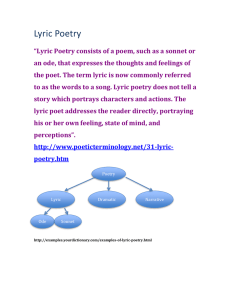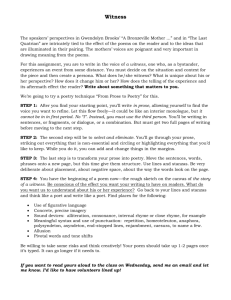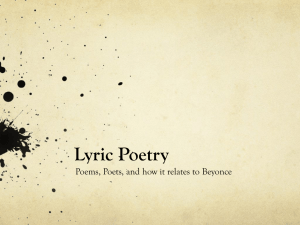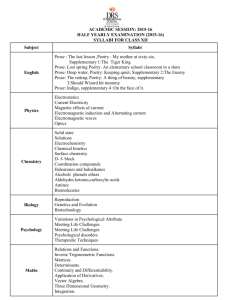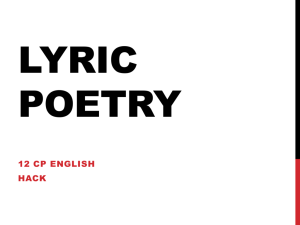FACT SHEET_Lyric Short Story
advertisement
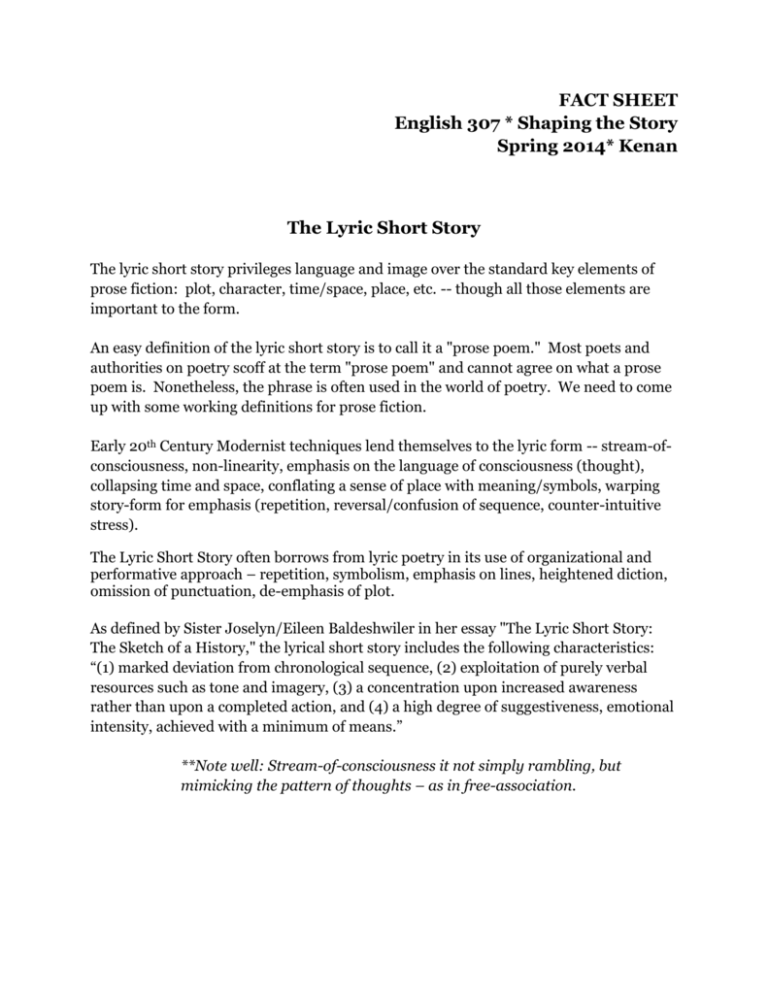
FACT SHEET English 307 * Shaping the Story Spring 2014* Kenan The Lyric Short Story The lyric short story privileges language and image over the standard key elements of prose fiction: plot, character, time/space, place, etc. -- though all those elements are important to the form. An easy definition of the lyric short story is to call it a "prose poem." Most poets and authorities on poetry scoff at the term "prose poem" and cannot agree on what a prose poem is. Nonetheless, the phrase is often used in the world of poetry. We need to come up with some working definitions for prose fiction. Early 20th Century Modernist techniques lend themselves to the lyric form -- stream-ofconsciousness, non-linearity, emphasis on the language of consciousness (thought), collapsing time and space, conflating a sense of place with meaning/symbols, warping story-form for emphasis (repetition, reversal/confusion of sequence, counter-intuitive stress). The Lyric Short Story often borrows from lyric poetry in its use of organizational and performative approach – repetition, symbolism, emphasis on lines, heightened diction, omission of punctuation, de-emphasis of plot. As defined by Sister Joselyn/Eileen Baldeshwiler in her essay "The Lyric Short Story: The Sketch of a History," the lyrical short story includes the following characteristics: “(1) marked deviation from chronological sequence, (2) exploitation of purely verbal resources such as tone and imagery, (3) a concentration upon increased awareness rather than upon a completed action, and (4) a high degree of suggestiveness, emotional intensity, achieved with a minimum of means.” **Note well: Stream-of-consciousness it not simply rambling, but mimicking the pattern of thoughts – as in free-association.

